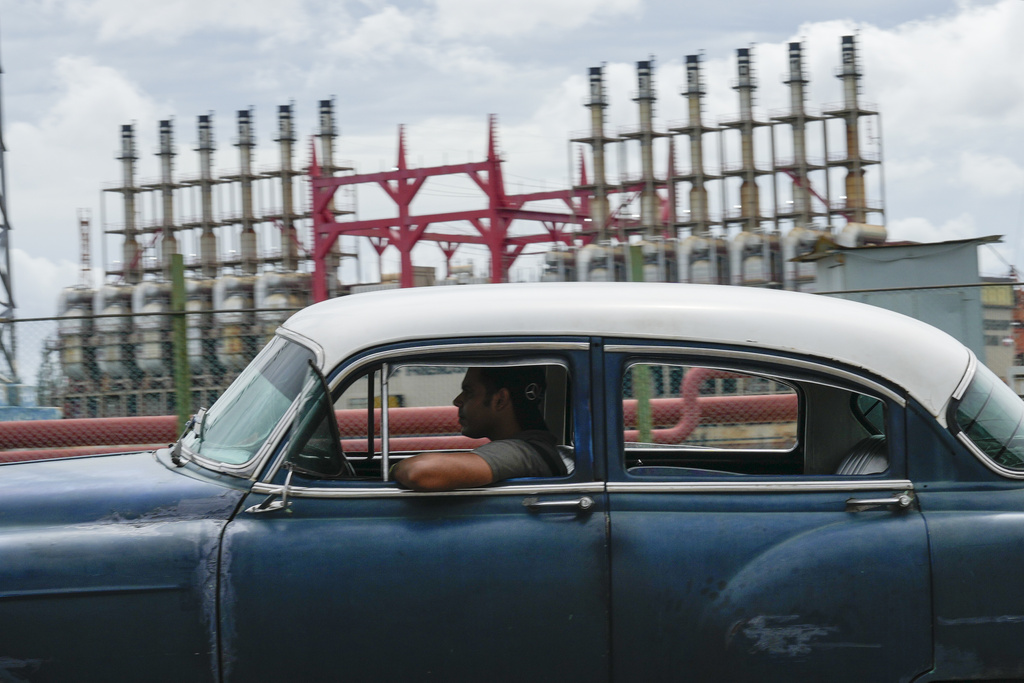Cuba Faces Widespread Blackout After Power Plant Shutdown \ Newslooks \ Washington DC \ Mary Sidiqi \ Evening Edition \ Cuba is grappling with a severe blackout after a major power plant failure, leaving millions of residents without electricity. The crisis, one of the worst in years outside of hurricane-related incidents, has worsened the island’s ongoing energy and economic struggles. Government officials have enacted emergency measures to manage the situation, but with no clear timeline for restoring power, widespread frustration and uncertainty persist.
Cuba Power Outage Quick Looks
- Grid collapse: Cuba’s national grid went down after the Antonio Guiteras plant failed.
- Millions affected: The outage has left much of the island without power for days.
- Government measures: Emergency steps, such as closing schools and businesses, aim to reduce energy demand.
- Cause of crisis: Aging infrastructure, high electricity demand, and fuel shortages are key factors.
- Public outcry: Citizens struggle with prolonged outages, leading to mounting frustration.
Deep Look
Cuba’s fragile power grid suffered a devastating blow on Friday when one of the island’s largest thermoelectric power plants, the Antonio Guiteras plant, went offline, sparking a nationwide blackout that has affected millions of residents. This power plant failure followed an earlier massive outage on Thursday evening, and together they have triggered an energy crisis that has plunged large parts of the country into darkness. As of Friday evening, much of the island remained without electricity, with no clear indication of when power might be fully restored.
The Cuban energy ministry confirmed that the grid collapsed around 11 a.m. local time on Friday, hours after the Antonio Guiteras thermoelectric plant ceased operations. The plant is one of Cuba’s main power sources, and its shutdown immediately disrupted the island’s energy supply. In response, the state-owned power company, Unión Eléctrica (UNE), activated distributed generation in certain regions, using smaller power sources to bring electricity to some areas. Additionally, a gas-fired thermoelectric plant was brought online to provide temporary relief. Despite these efforts, by nightfall, the majority of the island’s population remained without power.
Cuba, which has faced chronic power shortages and rolling blackouts in recent years due to a combination of economic challenges and an aging infrastructure, is accustomed to frequent outages. However, Friday’s grid collapse was unprecedented in scope and scale. Outside of the extreme damage caused by hurricanes, such as the one that battered the island in 2022, this marks one of the most serious electrical supply failures in modern Cuban history. Many residents expressed their concerns as the power outage extended throughout the day, disrupting daily life across the island.
Luis González, a 73-year-old retiree from Havana, shared his frustration with the situation. “The power went out at 8 in the morning, and it is now 5 in the afternoon, and there is no electricity anywhere,” he said, noting that he and his neighbors had been left in the dark for hours without any communication from officials regarding when power would be restored.
Adding to the anxiety, calls placed by The Associated Press to Cuban officials for updates on the situation went unanswered. The lack of communication has only heightened concerns that the outage may continue for an extended period, leaving millions of Cubans uncertain about what to expect.
Earlier on Friday, Prime Minister Manuel Marrero took to national television to address the public’s growing worries. During his address, Marrero described Thursday night’s blackout as the worst Cuba had experienced in at least two years. The energy crisis has been compounded by soaring demand during peak hours and the ongoing breakdown of the island’s aging thermoelectric plants, which have not received adequate maintenance in years.
According to government officials, the grid was overwhelmed when 1.64 gigawatts of energy—around half of the country’s total demand—went offline during peak hours on Thursday. This sudden loss of power triggered widespread outages across the island. As a result, millions of residents were left without electricity for hours, and by Friday, the government had implemented emergency measures aimed at reducing the strain on the grid. These measures included suspending classes in schools, closing non-essential government offices, and canceling services in some state-owned workplaces.
In his address, Marrero acknowledged the worsening energy situation, stating, “The situation has worsened in recent days.” He emphasized that the government had been halting many economic activities to ensure that enough energy would be available for residential use, especially as the country braces for more potential outages.
Alfredo López, the head of Unión Eléctrica, joined Marrero during the televised address and shed light on the contributing factors behind the power outage. López explained that an increase in electricity consumption by small and medium-sized businesses, many of which have been growing since the Cuban government authorized their operation in 2021, had added strain to the grid. The rising use of air conditioners in private residences and businesses, particularly during the island’s hottest months, further increased demand for electricity. In addition, the breakdown of older thermoelectric plants, combined with the lack of sufficient fuel to power some facilities, made it impossible for the grid to keep up with demand. López indicated that changes to electricity rates for these businesses might be considered as a part of the government’s plan to mitigate the energy crisis.
Marrero attempted to reassure the public by pointing to the anticipated arrival of additional fuel supplies from Cuba’s state-owned oil company. This influx of fuel, he said, would help alleviate the immediate crisis and restore some stability to the energy grid. Meanwhile, Cuban President Miguel Díaz-Canel took to social media, vowing that the government would prioritize the resolution of the energy emergency. Writing on X (formerly Twitter), Díaz-Canel stated, “We are devoting absolute priority to addressing and solving this highly sensitive energy contingency. There will be no rest until its restoration.”
Despite these official statements, the blackout has left millions of Cubans increasingly anxious as the hours without electricity dragged on. On Thursday night, many residents took precautionary steps, closing their doors and windows—windows they would normally leave open to allow for ventilation in the hot, humid climate. The glow of candles and lanterns inside homes illuminated the island’s streets, as families waited in uncertainty for the return of power.
For some, the blackout has brought back memories of past energy crises in Cuba. Prolonged outages have previously impacted critical services, such as the water supply, leaving residents without access to basic necessities. Yasunay Pérez, a resident of Havana, was quick to highlight the challenges of living through such crises. With a hint of sarcasm, she remarked, “We can use all our survival skills,” referring to the creative ways Cubans have learned to cope with ongoing hardships. Joking that she might have to bathe in the sea if the blackout continues, Pérez’s comment underscored the resilience and resourcefulness of ordinary Cubans facing yet another emergency.
As Friday night wore on, there were still no signs of an immediate solution, and the widespread power outage continued to disrupt daily life across the island. The government’s assurances, while offering some hope, have not yet translated into concrete results, leaving many to wonder just how long this latest blackout will last.
Cuba Faces Cuba Faces Cuba Faces







